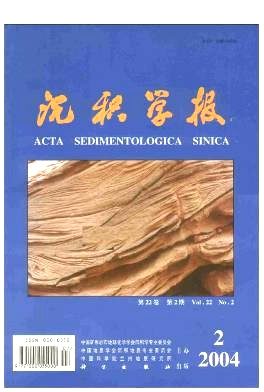|
[1]
|
Usdowski E, Hoefs J and Menschel G. Relationship between 13C and 18O fractionation and changes in major element composition in a recent calcite-depositing spring-A model of chemical variations with inorganic CaCO3 precipitation. Earth and Planetary Science Letters, 1979, 42: 267~276 |
|
[2]
|
Zhang Y , Mo Z. The origin and evolution of Orange Fall. Acta Geographica Sinica, 1982, 37(3): 303~316 |
|
[3]
|
Chafetz H S, Folk R L. Travertines: Depositional morphology and the bacterially constructed constituents. Journal of Sedimentary Petrology, 1984, 54: 289~316 |
|
[4]
|
Lorah M M, Herman J S. The chemical evolution of a travertine-depositing stream: geochemical processes and mass transfer reactions. Water Resources Research, 1988, 24 (9): 1541~1552 |
|
[5]
|
Dandurand J L, Gout R, Hoefs J, Menschel G, Schott J and Usdowski E. Kinetically controlled variations of major components and carbon isotopes in a calcite-precipitating spring. Chemical Geology, 1982, 36:299~315 |
|
[6]
|
Ford T D. Tufa: a freshwater limestone. Geology Today, 1989, 5(2): 60~63 |
|
[7]
|
Cheng X, Zhang Y. Thin-water effects on speleothems in caves of Guizhou, China. In: Proceedings of the 11th International Congress of Speleology, International Union of Speleology, Beijing, 1993, 68~69 |
|
[8]
|
Nielsen A E. Kinetics of precipitation. Macmillan, New York, 1964 |
|
[9]
|
Berner R A. The role of magnesium in crystal growth of calcite and aragonite from seawater. Geochimica et Cosmochimica Acta, 1980, 39:489~504 |
|
[10]
|
Reddy M M. Crystallization of calcium carbonate in presence of trace concentration of phosphorus-contained anions, I, Inhibition of phosphate and glycerophorus ions at pH 8.8 and 25℃. Journal of Crystal Growth, 1977, 41:287~295 |
|
[11]
|
Stumm W, Morgan J J. Aquatic Chemistry. New York: John Wiley & Sons, 1996 |
|
[12]
|
Reddy M M. Characterization of calcite dissolution and precipitation using an improved experimental technique. Science of Geology Memoir, 1983, 71:109~117 |
|
[13]
|
Morse J W. The kinetics of calcium carbonate dissolution and precipitation. In: Reeder R J, ed. Carbonates: Mineralogy and Chemistry, Reviews in Mineralogy, Vol. 11, Mineralogical Society of America, Washington, D. C. , 1983. 227~264 |
|
[14]
|
Buhmann D, Dreybrodt W. Calcite dissolution kinetics in the system H2O-CO2-CaCO3 with participation of foreign ions. Chemical Geology, 1987, 64: 89~102 |
|
[15]
|
Jacobson R L, Usdowski E. Geochemical controls on a calcite precipitating spring. Contributions to Mineralogy and Petrology, 1975, 51: 65~74 |
|
[16]
|
Maker M E. Tufa formation in the Transvaal, South Africa. Z. Geomorphol., N.F., 1973, 17:460~473 |
|
[17]
|
Liu Z, Svensson U, Dreybrodt W, Yuan D and Buhmann D. Hydrodynamic control of inorganic calcite precipitation in Huanglong Revine, China; field measurements and theoretical prediction of deposition rates. Geochimica et Cosmochimica Acta, 1995, 59 (15):3087~3097 |
|
[18]
|
Pedley H M. Classification and environmental models of cool freshwater tufas. Sedimentary Geology, 1990, 60: 143~154 |
|
[19]
|
Dreybrodt W, Buhmann D, Michaelis J and Usdowski E. Geochemically controlled calcite precipitation by CO2 out gassing: Field measurements of precipitation rates in comparison to theoretical predications. Chemical Geology, 1992, 97:285~294 |
|
[20]
|
Plummer L N, Wigley T M and Parkhurst D L. Kinetics of calcite dissolution in CO2-water systems at 5℃ to 60℃ and 0.0 to 1.0 atm CO2. American Journal of Science, 1978, 278:179~216 |
|
[21]
|
Dreybrodt W, Buhmann D. A masstransfer model for dissolution and precipitation of calcite from solutions in turbulent motion. Chemical Geology, 1991, 90:107~122 |






 DownLoad:
DownLoad: